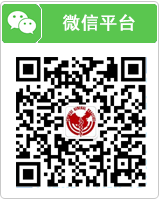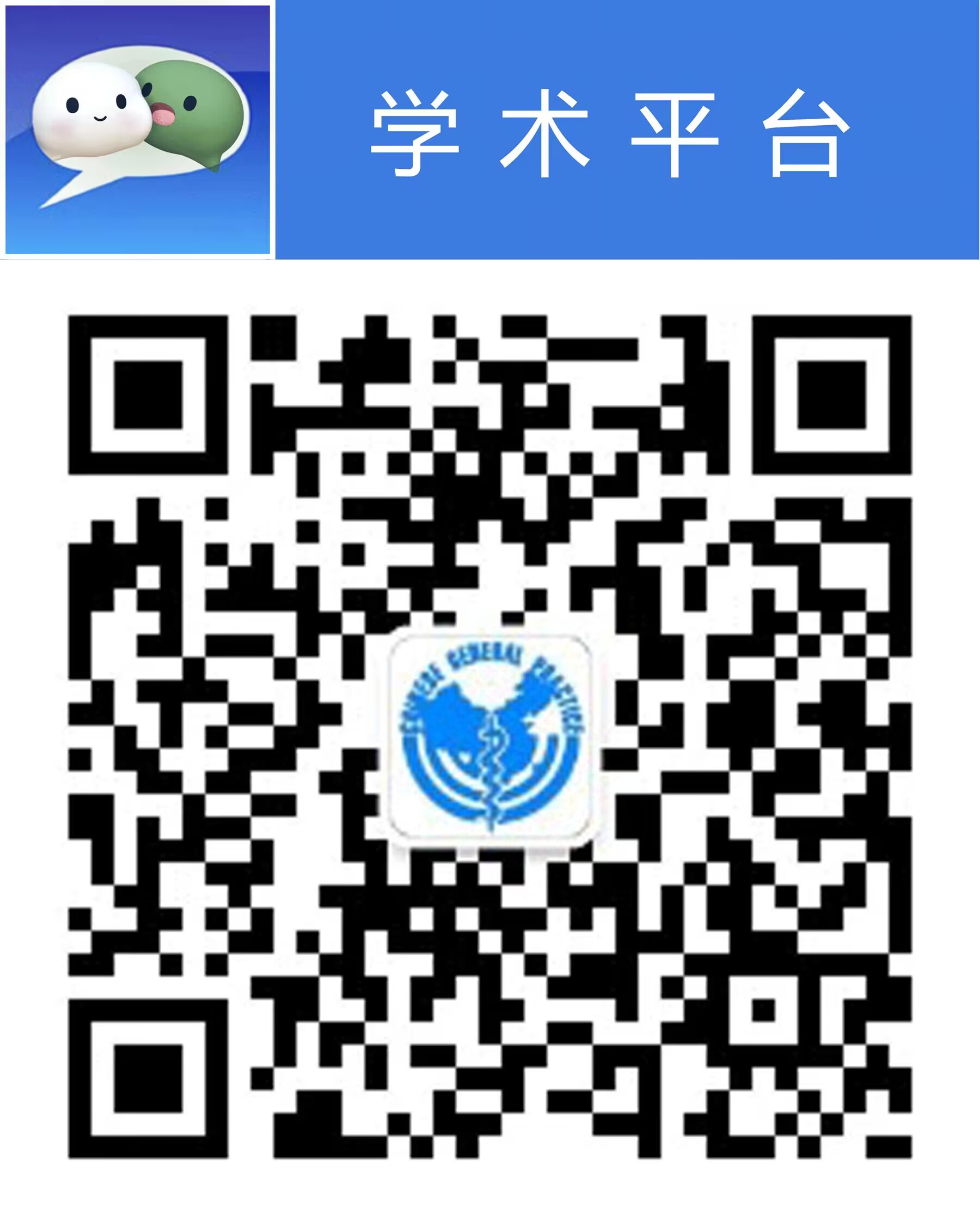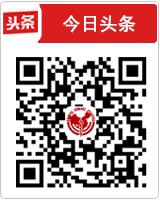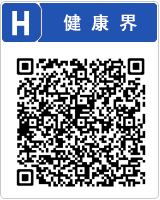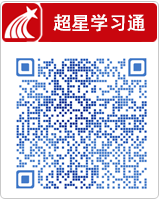中国全科医学 ›› 2025, Vol. 28 ›› Issue (24): 3005-3012.DOI: 10.12114/j.issn.1007-9572.2024.0084
收稿日期:2024-04-13
修回日期:2024-05-27
出版日期:2025-08-20
发布日期:2025-06-23
通讯作者:
刘健
作者贡献:
丁香提出研究思路,设计研究方案,收集数据,进行统计学分析,起草论文;陈晓露、张先恒负责电话随访,收集数据;刘健指导研究开展,并进行论文质量控制及修订,对论文负责。
基金资助:
DING Xiang, LIU Jian*( ), CHEN Xiaolu, ZHANG Xianheng
), CHEN Xiaolu, ZHANG Xianheng
Received:2024-04-13
Revised:2024-05-27
Published:2025-08-20
Online:2025-06-23
Contact:
LIU Jian
摘要: 背景 已知急性风湿热和链球菌(ASO)感染后反应性关节炎是ASO的免疫介导后果,而ASO对于类风湿关节炎(RA)的危害鲜有报道。 目的 本研究旨在通过回顾性队列研究探讨中草药与RA合并ASO感染(RA-ASO)患者再入院率的关系。 方法 使用安徽中医药大学第一附属医院医院信息系统(HIS)数据库,选取2013年6月—2021年6月的RA患者数据。依据纳排标准共纳入1 233例RA患者,根据是否合并ASO感染(ASO>50 kU/L)将患者分为单纯RA组(989例)和RA-ASO组(244例)。通过电话随访收集患者的药物使用情况及再入院情况,随访截至2022-06-01。244例RA-ASO患者中随访期使用中草药患者131例,未使用中草药患者113例;然后采用1∶1倾向评分匹配原则将RA-ASO患者分为中药组(113例)和非中药组(113例)。采用单因素和多因素Cox回归分析和Kaplan-Meier生存曲线分析探究RA-ASO患者再入院的危险因素。并通过聚类,对中药组的113例患者所使用的前20味中草药进行聚类,并与再入院减少进行关联规则分析。 结果 RA-ASO组患者平均年龄、60~89岁老年人占比低于单纯RA组,改善疾病的抗风湿药、糖皮质激素使用率、再入院率、ASO高于单纯RA组(P<0.05)。单因素Cox比例风险回归分析结果显示,男性(HR=1.01,95%CI=1.01~1.01,P<0.01)、骨关节炎(HR=1.65,95%CI=1.07~2.54,P=0.02)、间质性肺炎(HR=1.63,95%CI=1.11~2.39,P=0.01)、使用糖皮质激素(HR=1.51,95%CI=1.02~2.22,P=0.04)的RA-ASO患者再入院风险升高;使用中草药(HR=0.57,95%CI=0.39~0.83,P<0.01)的RA-ASO患者再入院风险降低。多因素Cox比例风险回归分析结果显示,间质性肺炎(HR=1.54,95%CI=1.02~2.32,P=0.04)、红细胞沉降率升高(HR=1.78,95%CI=1.06~3.00,P=0.03)的RA-ASO患者再入院风险升高;使用中草药(HR=0.48,95%CI=0.31~0.75,P<0.01)的RA-ASO患者再入院风险降低。Kaplan-Meier生存曲线分析结果显示,中药组RA-ASO患者再入院率低于非中药组(χ2=10.989,P<0.001),中药组女性RA-ASO患者再入院率低于非中药组女性患者(χ2=4.118,P=0.042)。其中再入院的减少与泽泻、桃仁、蒲公英等中草药具有强关联。 结论 中草药治疗可能与RA-ASO患者的再入院率较低有关。对于RA-ASO患者,可考虑中草药治疗,以减少患者再入院。
中图分类号:
| 组别 | 例数 | 性别[例(%)] | 年龄(岁) | 年龄[例(%)] | 并发症[例(%)] | ||||||
|---|---|---|---|---|---|---|---|---|---|---|---|
| 女 | 男 | 18~岁 | 40~岁 | 60~89岁 | 糖尿病 | 高血压 | 骨关节炎 | 间质性肺炎 | |||
| 单纯RA组 | 989 | 708(71.59) | 281(28.41) | 52.5±13.5 | 146(14.76) | 599(60.57) | 244(24.67) | 254(25.68) | 279(28.21) | 258(28.73) | 327(36.41) |
| RA-ASO组 | 244 | 171(70.08) | 73(29.92) | 47.7±11.5 | 40(16.40) | 158(64.74) | 46(18.85) | 56(22.95) | 61(25.00) | 63(35.82) | 87(35.66) |
| 检验统计量值 | 0.217 | -4.176a | 3.723 | 0.776 | 1.010 | <0.001 | 0.590 | ||||
| P值 | 0.642 | 0.001 | 0.156 | 0.378 | 0.315 | 0.932 | 0.443 | ||||
| 组别 | 西药[例(%)] | 再入院[例(%)] | 实验室指标[M(P25,P75)] | ||||||||
| DMARDs | NSAIDs | 糖皮质激素 | ASO(U/mL) | ESR(mm/1h) | CRP(mg/L) | RF(U/mL) | |||||
| 单纯RA组 | 627(63.40) | 606(61.27) | 301(30.43) | 412(41.66) | 11.00(5.00,18.00) | 37.00(20.00,63.00) | 13.32(3.34,38.95) | 78.00(18.45,204.80) | |||
| RA-ASO组 | 172(70.49) | 159(65.16) | 90(44.67) | 123(50.40) | 86.00(61.25,121.00) | 42.00(21.00,68.75) | 12.71(3.03,39.84) | 73.30(23.93,206.35) | |||
| 检验统计量值 | 4.319 | 1.258 | 3.760 | 1.733 | 30.027b | 2.698b | 0.187b | 0.219b | |||
| P值 | 0.038 | 0.262 | 0.032 | 0.013 | <0.001 | 0.157 | 0.808 | 0.966 | |||
表1 RA-ASO组和RA组患者临床资料比较
Table 1 Comparison of clinical data between RA-ASO group and RA group
| 组别 | 例数 | 性别[例(%)] | 年龄(岁) | 年龄[例(%)] | 并发症[例(%)] | ||||||
|---|---|---|---|---|---|---|---|---|---|---|---|
| 女 | 男 | 18~岁 | 40~岁 | 60~89岁 | 糖尿病 | 高血压 | 骨关节炎 | 间质性肺炎 | |||
| 单纯RA组 | 989 | 708(71.59) | 281(28.41) | 52.5±13.5 | 146(14.76) | 599(60.57) | 244(24.67) | 254(25.68) | 279(28.21) | 258(28.73) | 327(36.41) |
| RA-ASO组 | 244 | 171(70.08) | 73(29.92) | 47.7±11.5 | 40(16.40) | 158(64.74) | 46(18.85) | 56(22.95) | 61(25.00) | 63(35.82) | 87(35.66) |
| 检验统计量值 | 0.217 | -4.176a | 3.723 | 0.776 | 1.010 | <0.001 | 0.590 | ||||
| P值 | 0.642 | 0.001 | 0.156 | 0.378 | 0.315 | 0.932 | 0.443 | ||||
| 组别 | 西药[例(%)] | 再入院[例(%)] | 实验室指标[M(P25,P75)] | ||||||||
| DMARDs | NSAIDs | 糖皮质激素 | ASO(U/mL) | ESR(mm/1h) | CRP(mg/L) | RF(U/mL) | |||||
| 单纯RA组 | 627(63.40) | 606(61.27) | 301(30.43) | 412(41.66) | 11.00(5.00,18.00) | 37.00(20.00,63.00) | 13.32(3.34,38.95) | 78.00(18.45,204.80) | |||
| RA-ASO组 | 172(70.49) | 159(65.16) | 90(44.67) | 123(50.40) | 86.00(61.25,121.00) | 42.00(21.00,68.75) | 12.71(3.03,39.84) | 73.30(23.93,206.35) | |||
| 检验统计量值 | 4.319 | 1.258 | 3.760 | 1.733 | 30.027b | 2.698b | 0.187b | 0.219b | |||
| P值 | 0.038 | 0.262 | 0.032 | 0.013 | <0.001 | 0.157 | 0.808 | 0.966 | |||
| 项目 | 匹配前 | 匹配后 | ||||||
|---|---|---|---|---|---|---|---|---|
| 使用中草药(n=131) | 未使用中草药(n=113) | χ2(Z)值 | P值 | 中药组(n=113) | 非中药组(n=113) | χ2(Z)值 | P值 | |
| 性别[例(%)] | 0.801 | 0.371 | 0.520 | 0.470 | ||||
| 女 | 95(72.52) | 76(67.26) | 81(71.68) | 76(67.26) | ||||
| 男 | 36(27.48) | 37(32.74) | 32(28.32) | 37(32.74) | ||||
| 年龄[例(%)] | 35.632 | 0.030 | 2.917 | 0.232 | ||||
| 18~岁 | 26(19.85) | 14(12.39) | 14(12.39) | 14(12.39) | ||||
| 40~岁 | 67(51.15) | 63(55.75) | 72(63.72) | 82(72.57) | ||||
| 60~89岁 | 38(29.01) | 37(32.74) | 27(23.89) | 17(15.04) | ||||
| 并发症[例(%)] | ||||||||
| 糖尿病 | 31(23.66) | 30(26.55) | 0.269 | 0.604 | 29(25.66) | 30(26.55) | 0.023 | 0.880 |
| 高血压 | 25(19.08) | 31(27.43) | 2.392 | 0.122 | 25(22.12) | 31(27.43) | 0.855 | 0.355 |
| 骨关节炎 | 35(26.72) | 28(24.78) | 0.119 | 0.730 | 28(24.78) | 28(24.78) | <0.001 | 1.000 |
| 间质性肺炎 | 44(33.59) | 43(38.05) | 0.527 | 0.468 | 41(36.28) | 43(38.05) | 0.076 | 0.783 |
| 西药[例(%)] | ||||||||
| DMARDs | 99(75.57) | 73(64.60) | 3.510 | 0.061 | 81(71.68) | 73(64.60) | 1.304 | 0.253 |
| NSAIDs | 87(66.41) | 72(63.72) | 0.194 | 0.659 | 80(70.80) | 72(63.72) | 1.286 | 0.257 |
| 糖皮质激素 | 53(40.46) | 37(32.74) | 1.551 | 0.213 | 44(38.94) | 37(32.74) | 0.943 | 0.332 |
| 实验室指标[M(P25,P75)] | ||||||||
| ASO(U/mL) | 86.0(60.0,120.0) | 86.0(61.5,130.5) | 0.409a | 0.683 | 86.0(60.0,119.5) | 86.0(61.5,130.5) | 0.623a | 0.271 |
| ESR(mm/1h) | 40.0(21.0,70.0) | 43.0(21.0,67.0) | 0.235a | 0.794 | 42.0(24.0,70.5) | 43.0(21.0,67.0) | 0.407a | 0.997 |
| CRP(mg/L) | 14.75(4.24,45.23) | 10.10(2.15,37.61) | 1.581a | 0.059 | 15.75(4.56,47.14) | 10.10(2.15,37.61) | 1.792a | 0.051 |
| RF(U/mL) | 78.70(28.15,211.55) | 62.00(18.30,196.00) | 0.526a | 0.879 | 78.50(28.00,214.30) | 62.00(18.30,196.00) | 0.526a | 0.879 |
表2 RA-ASO患者中草药分组匹配情况
Table 2 Matching of herbal subgroups in RA-ASO patients
| 项目 | 匹配前 | 匹配后 | ||||||
|---|---|---|---|---|---|---|---|---|
| 使用中草药(n=131) | 未使用中草药(n=113) | χ2(Z)值 | P值 | 中药组(n=113) | 非中药组(n=113) | χ2(Z)值 | P值 | |
| 性别[例(%)] | 0.801 | 0.371 | 0.520 | 0.470 | ||||
| 女 | 95(72.52) | 76(67.26) | 81(71.68) | 76(67.26) | ||||
| 男 | 36(27.48) | 37(32.74) | 32(28.32) | 37(32.74) | ||||
| 年龄[例(%)] | 35.632 | 0.030 | 2.917 | 0.232 | ||||
| 18~岁 | 26(19.85) | 14(12.39) | 14(12.39) | 14(12.39) | ||||
| 40~岁 | 67(51.15) | 63(55.75) | 72(63.72) | 82(72.57) | ||||
| 60~89岁 | 38(29.01) | 37(32.74) | 27(23.89) | 17(15.04) | ||||
| 并发症[例(%)] | ||||||||
| 糖尿病 | 31(23.66) | 30(26.55) | 0.269 | 0.604 | 29(25.66) | 30(26.55) | 0.023 | 0.880 |
| 高血压 | 25(19.08) | 31(27.43) | 2.392 | 0.122 | 25(22.12) | 31(27.43) | 0.855 | 0.355 |
| 骨关节炎 | 35(26.72) | 28(24.78) | 0.119 | 0.730 | 28(24.78) | 28(24.78) | <0.001 | 1.000 |
| 间质性肺炎 | 44(33.59) | 43(38.05) | 0.527 | 0.468 | 41(36.28) | 43(38.05) | 0.076 | 0.783 |
| 西药[例(%)] | ||||||||
| DMARDs | 99(75.57) | 73(64.60) | 3.510 | 0.061 | 81(71.68) | 73(64.60) | 1.304 | 0.253 |
| NSAIDs | 87(66.41) | 72(63.72) | 0.194 | 0.659 | 80(70.80) | 72(63.72) | 1.286 | 0.257 |
| 糖皮质激素 | 53(40.46) | 37(32.74) | 1.551 | 0.213 | 44(38.94) | 37(32.74) | 0.943 | 0.332 |
| 实验室指标[M(P25,P75)] | ||||||||
| ASO(U/mL) | 86.0(60.0,120.0) | 86.0(61.5,130.5) | 0.409a | 0.683 | 86.0(60.0,119.5) | 86.0(61.5,130.5) | 0.623a | 0.271 |
| ESR(mm/1h) | 40.0(21.0,70.0) | 43.0(21.0,67.0) | 0.235a | 0.794 | 42.0(24.0,70.5) | 43.0(21.0,67.0) | 0.407a | 0.997 |
| CRP(mg/L) | 14.75(4.24,45.23) | 10.10(2.15,37.61) | 1.581a | 0.059 | 15.75(4.56,47.14) | 10.10(2.15,37.61) | 1.792a | 0.051 |
| RF(U/mL) | 78.70(28.15,211.55) | 62.00(18.30,196.00) | 0.526a | 0.879 | 78.50(28.00,214.30) | 62.00(18.30,196.00) | 0.526a | 0.879 |
| 变量 | 单因素分析 | 多因素分析 | ||||
|---|---|---|---|---|---|---|
| HR值 | 95%CI | P值 | HR值 | 95%CI | P值 | |
| 男性(以女性为参照) | 1.01 | 1.01~1.01 | <0.01 | 1.04 | 0.64~1.71 | 0.87 |
| 年龄 | 1.00 | 0.98~1.02 | 0.97 | 1.01 | 0.99~1.03 | 0.20 |
| 合并症 | ||||||
| 糖尿病 | 1.35 | 0.91~2.02 | 0.14 | 1.27 | 0.79~2.05 | 0.33 |
| 高血压 | 1.35 | 0.87~2.08 | 0.18 | 1.43 | 0.73~3.19 | 0.22 |
| 骨关节炎 | 1.65 | 1.07~2.54 | 0.02 | 1.53 | 0.49~1.21 | 0.26 |
| 间质性肺炎 | 1.63 | 1.11~2.39 | 0.01 | 1.54 | 1.02~2.32 | 0.04 |
| 西药 | ||||||
| DMARDs | 1.10 | 0.74~1.62 | 0.64 | 0.82 | 0.51~1.32 | 0.41 |
| NSAIDs | 1.24 | 0.82~1.85 | 0.31 | 1.21 | 0.71~2.05 | 0.49 |
| 糖皮质激素 | 1.51 | 1.02~2.22 | 0.04 | 1.19 | 0.58~2.42 | 0.64 |
| 中草药 | 0.57 | 0.39~0.83 | <0.01 | 0.48 | 0.31~0.75 | <0.01 |
| 实验室指标 | ||||||
| CRP | 1.53 | 0.79~1.65 | 0.50 | 1.49 | 1.00~2.23 | 0.05 |
| ESR | 1.14 | 0.94~2.48 | 0.09 | 1.78 | 1.06~3.00 | 0.03 |
| RF | 0.69 | 0.46~1.05 | 0.08 | 0.77 | 0.49~1.21 | 0.26 |
表3 RA-ASO患者再入院风险的Cox比例风险回归分析
Table 3 Cox proportional hazards regression analysis of readmission risk in RA-ASO patients
| 变量 | 单因素分析 | 多因素分析 | ||||
|---|---|---|---|---|---|---|
| HR值 | 95%CI | P值 | HR值 | 95%CI | P值 | |
| 男性(以女性为参照) | 1.01 | 1.01~1.01 | <0.01 | 1.04 | 0.64~1.71 | 0.87 |
| 年龄 | 1.00 | 0.98~1.02 | 0.97 | 1.01 | 0.99~1.03 | 0.20 |
| 合并症 | ||||||
| 糖尿病 | 1.35 | 0.91~2.02 | 0.14 | 1.27 | 0.79~2.05 | 0.33 |
| 高血压 | 1.35 | 0.87~2.08 | 0.18 | 1.43 | 0.73~3.19 | 0.22 |
| 骨关节炎 | 1.65 | 1.07~2.54 | 0.02 | 1.53 | 0.49~1.21 | 0.26 |
| 间质性肺炎 | 1.63 | 1.11~2.39 | 0.01 | 1.54 | 1.02~2.32 | 0.04 |
| 西药 | ||||||
| DMARDs | 1.10 | 0.74~1.62 | 0.64 | 0.82 | 0.51~1.32 | 0.41 |
| NSAIDs | 1.24 | 0.82~1.85 | 0.31 | 1.21 | 0.71~2.05 | 0.49 |
| 糖皮质激素 | 1.51 | 1.02~2.22 | 0.04 | 1.19 | 0.58~2.42 | 0.64 |
| 中草药 | 0.57 | 0.39~0.83 | <0.01 | 0.48 | 0.31~0.75 | <0.01 |
| 实验室指标 | ||||||
| CRP | 1.53 | 0.79~1.65 | 0.50 | 1.49 | 1.00~2.23 | 0.05 |
| ESR | 1.14 | 0.94~2.48 | 0.09 | 1.78 | 1.06~3.00 | 0.03 |
| RF | 0.69 | 0.46~1.05 | 0.08 | 0.77 | 0.49~1.21 | 0.26 |
| 编号 | 中草药 | 结局 | 支持度(%) | 置信度(%) | 提升度 |
|---|---|---|---|---|---|
| 1 | 半夏 | 未再入院 | 36.28 | 63.41 | 1.75 |
| 2 | 丹参 | 未再入院 | 62.83 | 49.30 | 1.36 |
| 3 | 猪苓 | 未再入院 | 47.79 | 46.30 | 1.28 |
| 4 | 黄芪 | 未再入院 | 53.98 | 45.90 | 1.27 |
| 5 | 薏苡仁 | 未再入院 | 63.72 | 43.06 | 1.19 |
| 6 | 泽泻 | 未再入院 | 55.75 | 39.68 | 1.09 |
| 7 | 茯苓 | 未再入院 | 87.61 | 39.39 | 1.09 |
| 8 | 鸡血藤 | 未再入院 | 52.21 | 38.98 | 1.07 |
| 9 | 红花 | 未再入院 | 84.96 | 36.46 | 1.00 |
表4 中草药与未再入院者之间的关联规则分析
Table 4 Association rule analysis of Herbs and readmission
| 编号 | 中草药 | 结局 | 支持度(%) | 置信度(%) | 提升度 |
|---|---|---|---|---|---|
| 1 | 半夏 | 未再入院 | 36.28 | 63.41 | 1.75 |
| 2 | 丹参 | 未再入院 | 62.83 | 49.30 | 1.36 |
| 3 | 猪苓 | 未再入院 | 47.79 | 46.30 | 1.28 |
| 4 | 黄芪 | 未再入院 | 53.98 | 45.90 | 1.27 |
| 5 | 薏苡仁 | 未再入院 | 63.72 | 43.06 | 1.19 |
| 6 | 泽泻 | 未再入院 | 55.75 | 39.68 | 1.09 |
| 7 | 茯苓 | 未再入院 | 87.61 | 39.39 | 1.09 |
| 8 | 鸡血藤 | 未再入院 | 52.21 | 38.98 | 1.07 |
| 9 | 红花 | 未再入院 | 84.96 | 36.46 | 1.00 |
| [1] |
|
| [2] |
|
| [3] |
|
| [4] |
|
| [5] |
|
| [6] |
|
| [7] |
|
| [8] |
|
| [9] |
|
| [10] |
|
| [11] |
|
| [12] |
|
| [13] |
|
| [14] |
|
| [15] |
|
| [16] |
|
| [17] |
|
| [18] |
|
| [19] |
|
| [20] | |
| [21] |
王杰. 健脾清热通络方改善类风湿关节炎湿热痹阻证患者感受的数据挖掘及对hsa_circ_0003353/JAK2/STAT3组合的影响[D]. 合肥:安徽中医药大学,2021.
|
| [22] |
|
| [23] |
|
| [24] |
|
| [25] |
|
| [26] |
|
| [27] |
|
| [28] |
|
| [29] |
|
| [30] |
|
| [31] |
|
| [32] |
|
| [33] |
|
| [34] |
|
| [35] |
张云坤,李娟,黄丹,等. 中药藤茶化学成分及抗感染作用研究进展[J]. 世界科学技术-中医药现代化,2021,23(6):2012-2022. DOI:10.11842/wst.20200722009.
|
| [36] |
|
| [37] |
|
| [38] |
|
| [39] |
|
| [40] |
|
| [41] |
|
| [42] |
|
| [43] |
|
| [44] |
|
| [45] |
|
| [46] |
|
| [47] |
|
| [48] |
|
| [49] |
王杰,刘健,文建庭,等. 健脾清热通络法改善RA湿热痹阻证患者circRNA0003353及免疫炎症、骨代谢指标影响的回顾性数据挖掘研究[J]. 中医药临床杂志,2022,34(4):725-730. DOI:10.16448/j.cjtcm.2022.0430.
|
| [50] |
孙艳秋,刘健,忻凌,等. 基于数据挖掘研究中医健脾单元疗法对类风湿关节炎合并贫血患者免疫炎性指标的影响[J]. 中国临床保健杂志,2021,24(2):238-242. DOI:10.3969/J.issn.1672-6790.2021.02.021.
|
| [51] |
|
| [52] |
|
| [53] |
|
| [54] |
|
| [55] |
|
| [56] |
|
| [1] | 杨继, 张垚, 赵英强, 张秋月. 中医三级防控模式对冠心病与脑卒中患者的管理效能评价:一项单中心前瞻性队列研究[J]. 中国全科医学, 2025, 28(22): 2750-2761. |
| [2] | 陈巧巧, 苏萍, 赵颖颖, 逄锦宏, 施婕, 王雅倩, 李秋春, 何蕊言, 王玥, 陈学禹, 乔俊鹏, 迟蔚蔚. 三酰甘油葡萄糖指数与老年人群新发心脏代谢性共病的相关性:前瞻性队列研究[J]. 中国全科医学, 2025, 28(18): 2270-2277. |
| [3] | 梅景雁, 陈敏, 张列强, 潘昀熙, 王鑫, 赵小登, 詹玮, 刘涛, 王艺颖. 累积脂质蓄积指数与高血压发病相关性:一项前瞻性队列研究[J]. 中国全科医学, 2025, 28(18): 2205-2211. |
| [4] | 安芹彧, 王艺颖, 张小丹, 张畑霖, 詹清清, 张福艳, 刘涛, 吴延莉. 社会经济地位、健康生活方式对心血管疾病影响的前瞻性队列研究[J]. 中国全科医学, 2025, 28(16): 2017-2024. |
| [5] | 令垚, 张文滨, 王仕鸿, 陈永泽, 董文娇, 邓星妤, 丁元林. 1990—2021年中国类风湿关节炎疾病负担变化趋势分析及预测研究[J]. 中国全科医学, 2025, 28(15): 1914-1922. |
| [6] | 张欣, 朱晴, 李南方. 脂质蓄积指数与高血压伴糖代谢异常患者发生慢性肾脏病风险的关系:一项回顾性队列研究[J]. 中国全科医学, 2025, 28(15): 1840-1846. |
| [7] | 张树静, 孙立新, 曹雨晴. 人乳头瘤病毒相关宫颈腺癌与非人乳头瘤相关宫颈腺癌的临床病理特征比较及预后研究[J]. 中国全科医学, 2025, 28(14): 1758-1764. |
| [8] | 倪雪桐, 阿合叶尔克·哈冷别克, 汤建敏, 曹腾瑞, 陶丽新, 郑德强, 李强, 韩玉梅, 杨兴华. 血糖异常与非酒精性脂肪肝病的双向因果关联研究:基于北京市健康管理队列[J]. 中国全科医学, 2025, 28(13): 1607-1613. |
| [9] | 李东幸, 牛紫敏, 王皓翔. 广州市黄埔区老年人群健康体检的回顾性队列研究[J]. 中国全科医学, 2025, 28(13): 1635-1641. |
| [10] | 王德祥, 原佳雯, 陆沁云, 杭宇豪, 鲁俊, 程璐. 清肺化瘀通腑方治疗时机对脓毒症相关急性呼吸窘迫综合征治疗效果及预后的影响研究[J]. 中国全科医学, 2025, 28(12): 1500-1505. |
| [11] | 汪姜涛, 杜瑀, 朱玲, 赵否曦, 胡远东, 刘涛. 成年人脂质蓄积指数与高血压发病的相关性:一项前瞻性队列研究[J]. 中国全科医学, 2025, 28(12): 1433-1438. |
| [12] | 陈晓露, 刘健. 中草药降低类风湿关节炎合并干燥综合征患者再入院风险的回顾性队列研究[J]. 中国全科医学, 2025, 28(12): 1506-1512. |
| [13] | 娄贤哲, 苗同国, 张仕雅, 马冬, 南月敏. 单核细胞/高密度脂蛋白胆固醇比值对原发性非病毒性肝细胞癌患者预后的影响:一项回顾性队列研究[J]. 中国全科医学, 2025, 28(09): 1092-1099. |
| [14] | 朱玲, 赵否曦, 汪姜涛, 杜瑀, 吴延莉, 张骥, 刘涛. 高三酰甘油血症-腰围表型与2型糖尿病发病风险:一项前瞻性队列研究[J]. 中国全科医学, 2025, 28(06): 681-687. |
| [15] | 王媛, 肖斐, 张宇馨, 周恩慧, 钟建琴, 胡宇欣, 洪峰. 少数民族特色饮食与心血管疾病的关系:基于西南区域少数民族聚集地世居自然人群队列研究[J]. 中国全科医学, 2025, 28(06): 688-696. |
| 阅读次数 | ||||||
|
全文 |
|
|||||
|
摘要 |
|
|||||
